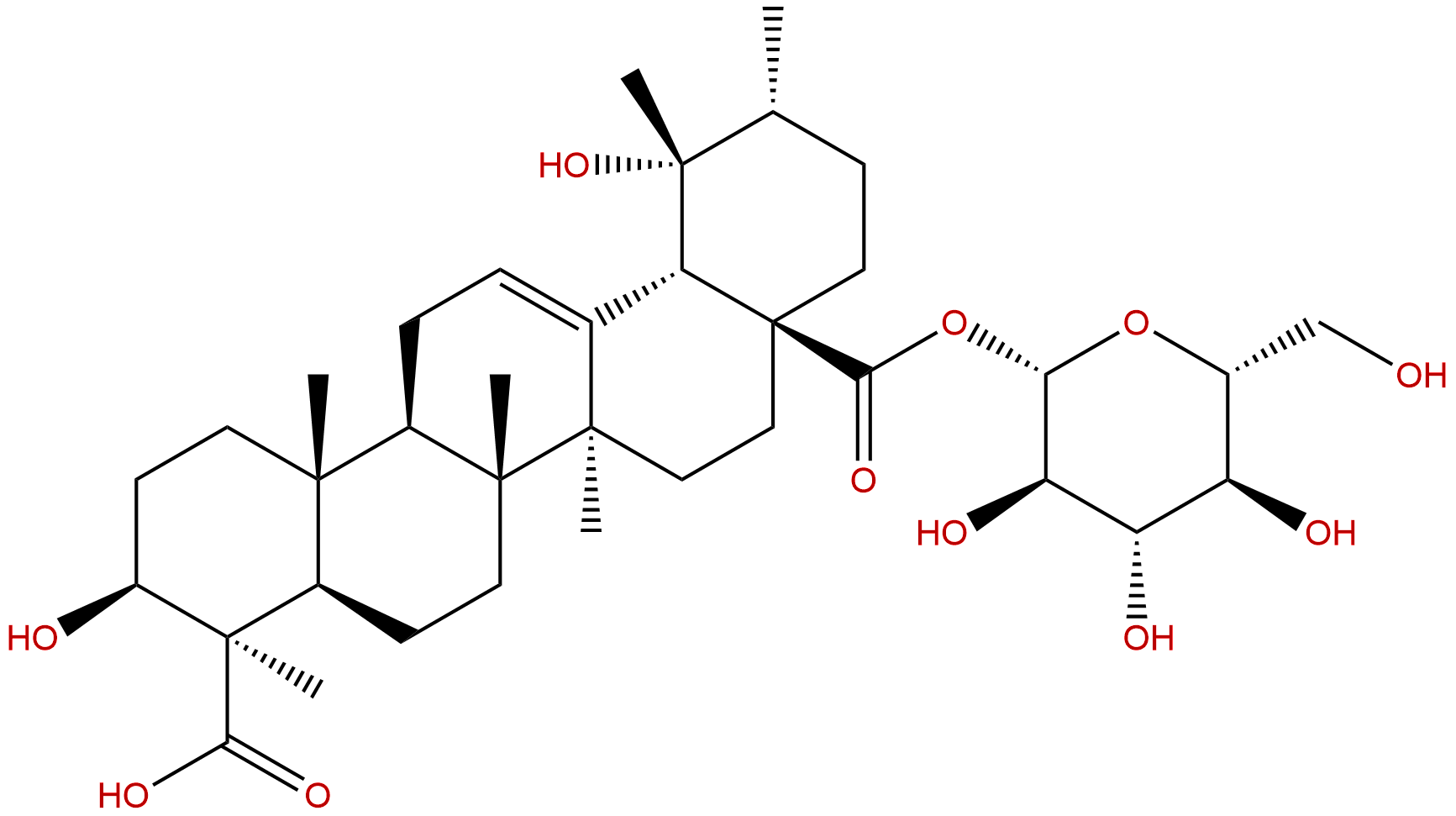
Ilexsaponin A1CAS No.:108524-93-2
|
||||||||||
 |
|
|
||||||||

| Catalogue No.: | BP1758 |
| Formula: | C36H56O11 |
| Mol Weight: | 664.833 |
Product name: Ilexsaponin A1
Synonym name: Ilexsaponina A
Catalogue No.: BP1758
Cas No.: 108524-93-2
Formula: C36H56O11
Mol Weight: 664.833
Botanical Source: llexhainanensis Merr(Hainan holly leaf); Ilex pubescens
Physical Description:
Type of Compound:
Purity: 95%~99%
Analysis Method: HPLC-DAD or/and HPLC-ELSD
Identification Method: Mass, NMR
Packing: Brown vial or HDPE plastic bottle
The product could be supplied from milligrams to grams. Inquire for bulk scale.
We provide solution to improve the water-solubility of compounds, thereby facilitating the variety of activity tests and clinic uses.
For Reference Standard and R&D, Not for Human Use Directly.
Description:
Ilexsaponin A shows protective effects on ischemia-reperfusion-induced myocardial injury through anti-apoptotic pathway.
References:
PLoS One. 2017 Feb 9;12(2):e0170984.
Ilexsaponin A attenuates ischemia-reperfusion-induced myocardial injury through anti-apoptotic pathway.
The protective effects of Ilexsaponin A on ischemia-reperfusion-induced myocardial injury were investigated.
METHODS AND RESULTS:
Myocardial ischemia/reperfusion model was established in male Sprague-Dawley rats. Myocardial injury was evaluated by TTC staining and myocardial marker enzyme leakage. The in vitro protective potential of Ilexsaponin A was assessed on hypoxia/reoxygenation cellular model in neonatal rat cardiomyocytes. Cellular viability and apoptosis were evaluated by MTT and TUNEL assay. Caspase-3, cleaved caspase-3, bax, bcl-2, p-Akt and Akt protein expression levels were detected by western-blot. Ilexsaponin A treatment was able to attenuate the myocardial injury in ischemia/reperfusion model by reducing myocardial infarct size and lower the serum levels of LDH, AST and CK-MB. The in vitro study also showed that Ilexsaponin A treatment could increase cellular viability and inhibit apoptosis in hypoxia/reoxygenation cardiomyocytes. Proapoptotic proteins including caspase-3, cleaved caspase-3 and bax were significantly reduced and anti-apoptotic protein bcl-2 was significantly increased by Ilexsaponin A treatment in hypoxia/reoxygenation cardiomyocytes. Moreover, Ilexsaponin A treatment was able to increase the expression levels of p-Akt in hypoxia/reoxygenation cellular model and myocardial ischemia/reperfusion animal model.
CONCLUSIONS:
Coupled results from both in vivo and in vitro experiments indicate that Ilexsaponin A attenuates ischemia-reperfusion-induced myocardial injury through anti-apoptotic pathway.